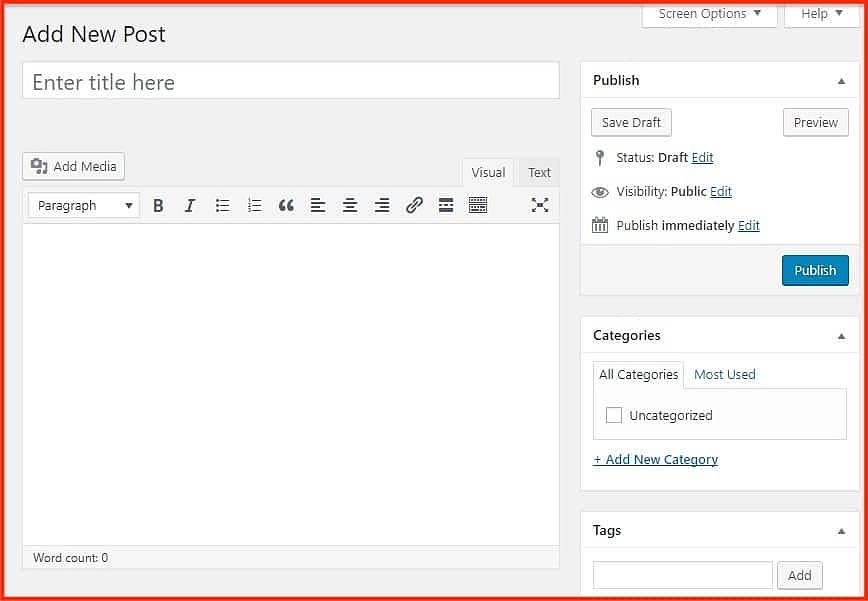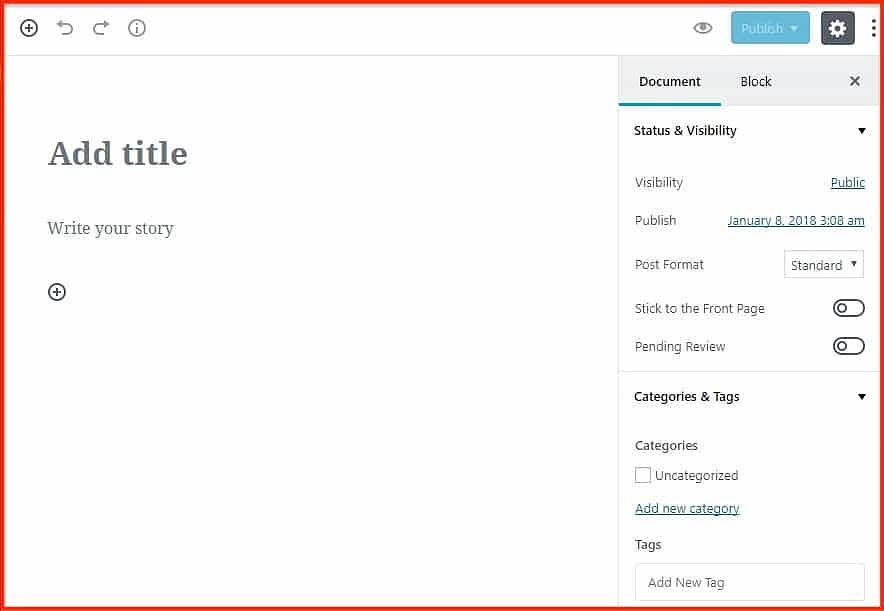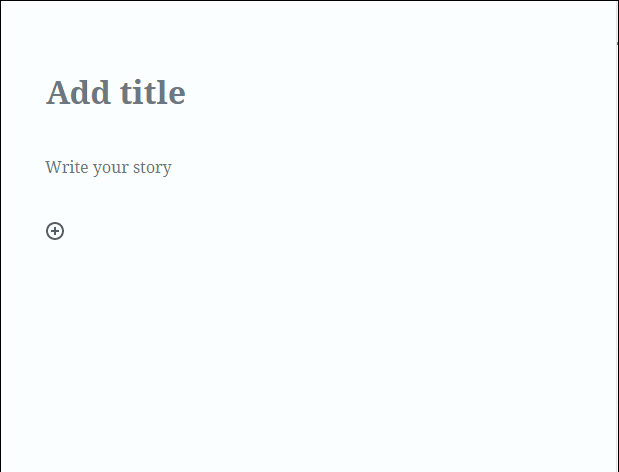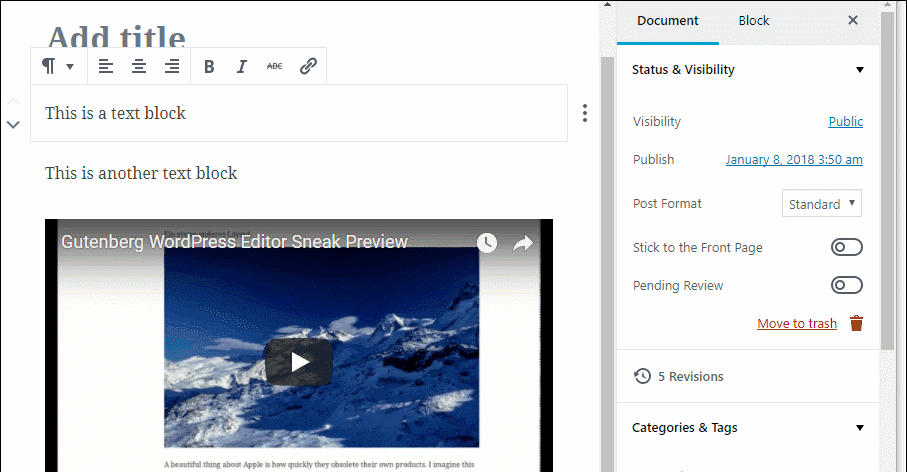The New WordPress Gutenberg Editor Coming In WordPress 5.0
In case you’re similar to most bloggers, you presumably utilize WordPress to control your blog. WordPress is, as I would like to think, and that of numerous others, the best apparatus to use for running a blog. Not exclusively is it the best, it is likewise the world’s most famous substance administration framework, driving right around 30% of all sites on the internet.That stated I have a major news about the world’s most mainstream content administration framework.
It is going to get a totally overhauled altering experience.
Yes, the way that you compose your blog entries in WordPress is going to change hugely. It is required to give you significantly greater adaptability in composing and organizing your blog posts.
This change is coming as the new WordPress Gutenberg editor.In this post, I’ll acquaint you with what the Gutenberg editorial manager is, give you a short take a gander at clarifying how it functions. I will likewise reveal to you when you can hope to see the new supervisor and offer a couple of other minor significant details.
What Is The WordPress Gutenberg Editor?
Gutenberg is a totally overhauled editorial manager went for supplanting the current TinyMCE proofreader that WordPress has utilized for, well, practically’s forever.
Gutenberg will probably make it less demanding and more available for easygoing clients to make special substance structures by utilizing squares (I’ll clarify this in a moment).
Or on the other hand, in the expressions of Matt Mullenweg, fellow benefactor of WordPress:
The supervisor will try to make another page and post building background that makes composing rich posts easy, and has “obstructs” to make it simple what today may take shortcodes, custom HTML, or “puzzle meat” install disclosure.
On the off chance that you’re not comfortable with what I’m discussing when I say TinyMCE proofreader, this is the thing that the current WordPress TinyMCE supervisor resembles:
Interestingly, this is what the new WordPress Gutenberg editorial manager resembles:
Be that as it may, aside from the new interface styling, the genuine change that Gutenberg will bring is in that piece based altering approach.
How Does The WordPress Gutenberg Editor Work?
If you’re utilizing WordPress, I’m certain you’re acquainted with how the present manager functions – you have a solitary box where you compose your content, include your pictures, insert videos, etc.
Gutenberg changes that by giving you a chance to compose your posts utilizing different “blocks”.
A “block” can be essentially anything. For instance, these consider a block:
- A paragraph of text
- A picture
- An inserted video
- A quote
- A button
Here’s a case of how the distinctive squares function. In the GIF underneath, you can see that I have included four unique squares:
- Two paragraph text blocks
- One image block
- One video block
What’s more, in light of the fact that each square is a different element, you can likewise effectively apply a shading foundation to only a solitary piece:
However, here’s the extremely cool part about blocks:
Developers will have the capacity to compose their own squares too, which clears the path for the end of things like shortcodes and install codes.
For case, as opposed to expecting to embed a shortcode to add an exhibition to your post, you’ll in the end simply have the capacity to utilize a “display hinder” to embed your display and see a life see in the editorial manager itself.
In a nutshell, the new WordPress Gutenberg supervisor sits someplace in the middle of the current TinyMCE proofreader and all the more intense page builders.
With it, you’ll have the capacity to fabricate more alluring pages without having to know any code. Also, that ought to open a huge amount of supportive new functionalities for your blog!
When Is The WordPress Gutenberg Editor Going To Be Officially Released?
The WordPress Gutenberg supervisor is booked to be discharged as a feature of WordPress 5.0, which is the following major WordPress discharge (WordPress is right now on WordPress 4.9.X).
Unfortunately, we don’t have the foggiest idea about the correct date of the WordPress 5.0 discharge. What we know is it is planned for quite a while in 2018. Also, it’s past conduct holds, WordPress 5.0 should send around June 2018.
However, this is one of those circumstances where the group won’t dispatch WordPress 5.0 until the point that Gutenberg is prepared. So June 2018 is unquestionably only a gauge in view of past discharge plans – it might well wind up later than that.
Will You Have To Use The WordPress Gutenberg Editor When WordPress 5.0 Is Released?
While Gutenberg should give you greater adaptability in the more extended run, I comprehend that you might not have any desire to utilize Gutenberg immediately. Particularly in light of the fact that it may require some investment for you to get acclimated to Gutenberg and coordinate your current distributing forms with the new editor.
Don’t stress, however. While Gutenberg will supplant the default manager, you’ll have the capacity to introduce the Classic Editor module to either:
Totally supplant the Gutenberg proofreader with the current TinyMCE editorial manager
Add exchange connects to the Posts and Pages screens to enable access to both Gutenberg and the TinyMCE editor
The most effective method to Try The WordPress Gutenberg Editor Beta Right now
like I stated, the Gutenberg manager won’t be formally discharged as a major aspect of the WordPress center until WordPress 5.0. In any case, that doesn’t mean you need to hold up until at that point to experiment with the Gutenberg editor.
The Gutenberg supervisor has really been freely accessible as a WordPress module at WordPress.org since June 2017.
That means you can introduce it on your webpage and begin playing around with it today.
However, recollect that while the proofreader has gained a decent arrangement of ground, it is still in its beta phase.
For that reason, I prescribe against introducing this module on your live website.Instead, make a protected neighborhood WordPress introduce utilizing something like XAMPP or WAMP.
That way, you can make yourself acquainted with the new editorial manager without putting your genuine webpage in any danger.
Then, introduce the Gutenberg module like you would some other plugin.
Once you introduce the module, your webpage will naturally utilize the Gutenberg proofreader for every new post and pages. Be that as it may, if necessary, you can, in any case, get to the great supervisor by utilizing the drop-down alongside the Add New BUTTON:
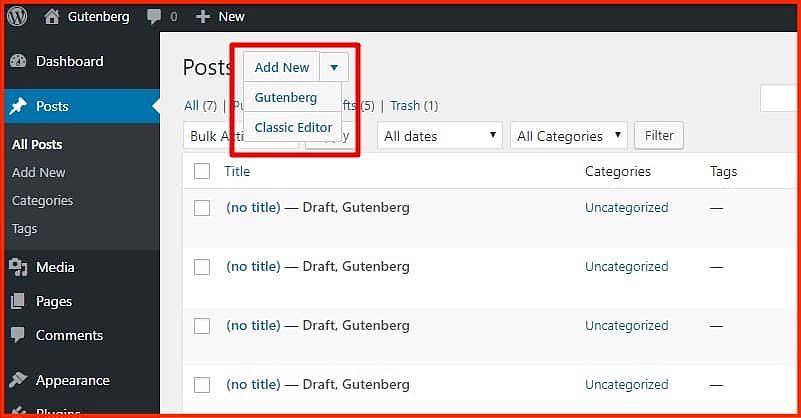
WordPress has been utilizing practically the same TinyMCE supervisor for whatever length of time that a great many people can recall, so I believe it’s genuinely unavoidable that there will be developing torments when WordPress 5.0 comes.
You should take in a totally new interface, which is clearly going to take some adjustment.
But over the long haul, that new interface should give you more energy to make amazing content.
To additionally enable you to prepare for the Gutenberg proofreader, I’ll be posting a more inside and out Gutenberg instructional exercise in the coming days that will really demonstrate to you how you can utilize Gutenberg to compose and style a blog post.
Now I need to get notification from you. What do you think about the Gutenberg manager up until now? Do you like it? Or on the other hand, do despite everything you incline toward the current WordPress editorial manager? Tell me in the comments!
Here are a couple of hand-picked articles for you to peruse next:


